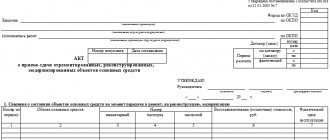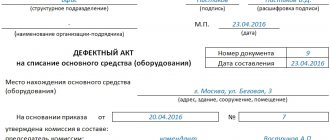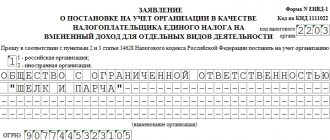Autonomous organizations are obliged to organize and exercise internal control over completed business transactions using their own resources.
The main rule: one organization - one cash book. It also applies to private entrepreneurs. The exception is legal entities that have branches or representative offices operating on the basis of a personal balance sheet.
In such a situation, the branch (representative office) draws up its own book recording its operations, and copies of the primary papers are transferred to the main office of the company.
Information about the amount of cash balance is reflected in the cash book of this division and on its balance sheet, then the information is entered into the consolidated balance sheet of the parent company.
Form 4-FSS for the year
The currently current form of Form 4-FSS was approved by FSS Order No. 381 dated September 26, 2016. The latest amendments to it were made by FSS Order No. 275 of 07/07/2017. There is no new form provided for the 4-FSS report for 2021.
From 2021 it is planned to introduce a new report form. The draft new order of the FSS provides for the entry into force of the new form 4-FSS, starting with the report for the 1st quarter of 2021 . This is due to the transition to direct payments: from this period, employers will transfer insurance contributions in full - they will not be reduced by the amount of benefit payments. The territorial branches of the Funds will assign and pay insurance payments.
The new form will be simplified. In particular, tables containing data on expenses of funds paid from insurance contributions will be excluded from it, and tables for calculations of contributions will be removed. At the same time, the table on contributions for insurers temporarily providing personnel to other employers will change in the form, and a new section will appear for companies with designated independent qualifying units.
Thus, the currently current 4-FSS 2021 form will be changed no earlier than the 1st quarter of 2021. For 2021, policyholders submit reports using the same form.
Procedure for using the waybill
The mandatory form of waybill is not provided for by law. The company has the right to independently develop the form based on its own needs.
However, there are two types: standard interindustry form 4c and form 4-P, which an enterprise can use when preparing primary documents for transport operations.
They differ in the way payment for transportation services is calculated. Truck waybill form 4-c is used when piecework indicators are used for calculation, the second form is used with a time-based payment system.
As an accompanying document, in addition to the voucher, the driver is given a consignment note for the cargo.
The waybill for a truck is issued by responsible persons in the company for one day or shift. The mechanic, the pre-trip medical examiner, the dispatcher, the fuel attendant, and the driver of the car must put their marks in it.
Deadlines and features of form 4-FSS (year 2020)
The form is submitted in paper or electronic format if the average number of employees is no more than 25 employees at the end of last year, but if the number is larger, an electronic report is required.
In 2021, reporting deadlines remain the same. The policyholder submits a paper report for 2021 no later than the 20th day of the month that follows the billing period, i.e. no later than 01/20/2021. The deadline for submitting an electronic annual report is until the 25th of the next month, i.e. no later than 01/25/2021
You can download Form 4-FSS for 2021 at the end of this article. It is not difficult to compile a report; it consists of a title page in which data about the policyholder is entered, and six tables. The title, as well as tables 1, 2 and 5, must always be filled out, even if the employer has not made any accruals or payments for “injuries” (in this case, zero reports are submitted). The remaining sections are not required to be completed, except in cases where during the reporting period the policyholder had transactions to be reflected in them.
All amounts are given in rubles and kopecks.
The procedure for filling out the form is given in the same order No. 381.
Is it required to be present at the enterprise?
All businesses that handle cash must have a cash book.
The applied taxation system in the company or its organizational and legal status does not imply the application of any benefits.
Maintaining online cash registers does not exempt you from preparing a cash register according to approved standards.
Individual entrepreneurs who record taxable items (income, expenses, natural indicators) characterized by a certain category of economic activity are officially exempt from drawing up such a form. Read about maintaining an individual entrepreneur's cash book here.
Accounting, in this case, must be prepared in accordance with the established regulations. This norm is outlined in paragraph 4.1 of the Bank of Russia Instructions (No. 3210-U).
Over what period is it formed?
The cash book begins on the first day of the calendar year and is maintained incrementally until its end. The next year, a new document is drawn up, the numbering of documents begins with number 1 and further in order.
The cash book is presented in the form of a journal, the number of its pages varies from 50 to 100.
What are the requirements and rules for manual maintenance?
The unified form KO-4 is a unified form for conducting financial transactions at an enterprise. Non-profit organizations use the form code according to OKUD 0310004, budgetary institutions use the code according to OKUD 0504514.
The legislation of the Russian Federation allows several options for maintaining this reporting:
- on printed forms filled out by hand;
- entering information on a computer into the appropriate form and then printing the completed sheets;
- in specialized software systems electronically, followed by the formation of an electronic document with an electronic digital signature - the procedure for filling out a book in electronic format.
Filling out the form and carrying out cash transactions should be carried out by a cashier or other specialist of the enterprise, vested with the corresponding rights and responsibilities by order of the manager.
If the position of cashier is not included in the staffing table of the institution, then the responsibilities for filling out the form are assigned to the accountant or chief accountant.
In a small company where the number of employees is 1-2 specialists, the registration of cash discipline can be entrusted to a third-party organization or immediate supervisor.
What is the basis for registration?
The Central Bank's instruction dated March 11, 2014 (No. 3210-U) serves as the basis for issuing the main cash document.
The corresponding entries in the cash book are made based on the cash register's expenditure and receipt documents, drawn up in accordance with the norms of current legislation.
How to display data in tables 1 and 1.1
Table 1 calculates the basis for calculating contributions for “injuries”. The data is reflected on a cumulative basis from the beginning of the billing period.
Columns 4, 5, 6 contain amounts broken down for the last three months of the billing period. Column 3 includes the year-to-date basis.
Table 1.1 is required to be completed only if the policyholder sent its employees to temporarily perform official duties for another employer in accordance with the contract. Here you indicate information about the host organization and the basis for calculating contributions. Acceptance LLC did not send its employees, therefore section 1.1 is not included in the report.
How to pass 4-OS through Kontur.Extern
The electronic method of submitting reports to Rosstat is simple and convenient. You don’t have to visit branches, hire couriers and redo incorrect reporting several times.
Extern allows you to report without leaving your computer and without additional agreements with government agencies. To do this, just register with the service and issue an electronic signature. New users have the opportunity to get a “test drive” of the service for three months.
To submit the form, go to the “Rosstat” section and select the method of generating the report: download a ready-made one or fill it out in the service interface. The system automatically inserts the data it knows about your company into the form, and after approving the report, it checks whether the control ratios have been met. An incorrect report will not be sent, but edits can be made in editing mode.
After agreeing with the system, sign the electronic signature report and send it to the statistics service. As soon as Rosstat receives and accepts the report, you will receive a notification.
Procedure for filling out table 2
Table 2 is filled out according to accounting data on the status of settlements with the Social Insurance Fund for insurance premiums and expenses for the billing period.
On the left side of the table, the policyholder indicates the amount of contributions in terms of accruals for the year and for the last three months, balances at the beginning of the billing period and funds received from the Fund. On the right, the employer reflects the insurance payments made and the transferred insurance premiums (indicating payment details for the last three months).
The indicators are summarized, line 19 reflects the total debt (or overpayment) of the policyholder to the Fund at the end of the quarter.
Truck waybill sample filling
[ads-pc-2] [ads-mob-2]
Let's look at an example of how to fill out a waybill.
Front side
The company puts its company stamp on it. The document must have a number, which is determined when registering it in a special journal, as well as the date it was completed.
Next, you need to indicate the name of the company, its address, telephone number, and OKPO code.
If necessary, fill in the code with the mode of operation, columns, and teams. Next, indicate the make and type of the truck, its state number, and garage identifier.
Full name is written below. the driver, his personnel number and details of his driving license.
If a trailer is used for transportation, then similar information is filled in for it in the appropriate fields as for a car.
The first table on the right records data on the work of the driver and transport. Here the planned and actual date and time of departure and arrival, as well as speedometer readings are entered. The following columns indicate the type and code of fuel used, the amount of fuel filled, as well as at the beginning and end of the day. In the same table you need to reflect information about the operating conditions of the machine (coefficients) and the special equipment used. This data is endorsed by all responsible persons.
Next, the dispatcher fills in information about the task that the driver must complete. It includes the name of the company that will have the vehicle at its disposal, the address and delivery time, the type of cargo being transported, the number of riders, mileage, and tonnage. After this, the responsible person determines by calculation the amount of fuel required and writes it in the appropriate line, confirming the data with his signature.
Before leaving for the line, the medic must examine the driver and put a stamp on the permit.
The mechanic checks the technical condition of the car when leaving and returning. The transfer of the car from him to the driver and back is carried out by transfer signatures.
In the “Special Notes” section, information is entered about the accident that occurred, about the training carried out by the traffic safety inspector, repairs, etc.
Reverse side
[ads-pc-4] [ads-mob-4]
On the reverse side, the driver or representative of the customer organization makes notes about the progress of the task: what time and where the car arrived, the number and numbers of accompanying documents. It is advisable to certify all this data with the seals and signatures of the responsible persons of the counterparties. The table is endorsed by the dispatcher and the driver.
Downtimes that occur are noted below. Data about the cause, type, duration of it are recorded, and the signatures of the responsible persons are affixed.
In the lower table, the dispatcher enters the results of fuel consumption calculated when applying standards and based on the fact of fuel use. Next, the operating time of the machine is indicated with a breakdown by type of period. The following columns indicate the number of rides and entries into the garage. The mileage traveled by the car is determined; if there was a trailer, then that too. Here the total mileage and with the load are indicated.
Data is entered on the amount of cargo transported by the machine and trailers, and the ton*km indicator is determined, on the basis of which invoices are issued to customers. This section is endorsed by the taxi driver.
Below, for reference, data on the codes of car brands and trailers is recorded and the indicator for the days of operation of the car is filled in.
Payouts: tables 3 and 4
Tables 3 and 4 are filled out if the corresponding indicators are available. The data in Table 3 reflects insurers who, in the billing period, had expenses for the payment of benefits related to occupational diseases, work-related injuries and accidents. The table is also filled out when funds are spent on purchasing PPE or carrying out preventive measures to reduce injuries and occupational diseases.
Table 4 includes the number of persons injured in insured events in the reporting year. Since Acceptance LLC did not have such payments, these sections are not filled out.
If a pilot project “Direct Payments” is operating in the region, i.e. Since the Social Insurance Fund transfers payments to victims directly, information about such payments is not included in Tables 2, 3 and 4.
Responsibility for failure to comply with deadlines for submitting Form 4-FSS
Legal entities and individual entrepreneurs, in case of delay in submitting a report, will have to pay a fine in the amount of 5% of the amount of contributions accrued for payment over the last 3 months. A fine is assessed for each month (full and incomplete) for which the company delayed submitting reports. The maximum fine does not exceed 30% of the amount charged, and the minimum is 1000 rubles. (Clause 1, Article 26.30 of Law No. 125-FZ of July 24, 1998).
Failure to comply with the electronic format, if required, will result in a fine of 200 rubles. (Clause 2 of Article 26.30 of Law No. 125-FZ).
In accordance with the Code of Administrative Offenses of the Russian Federation (clause 2 of Article 15.33 of the Code of Administrative Offenses of the Russian Federation), penalties are also imposed on officials of the policyholder in the amount of 300-500 rubles.











